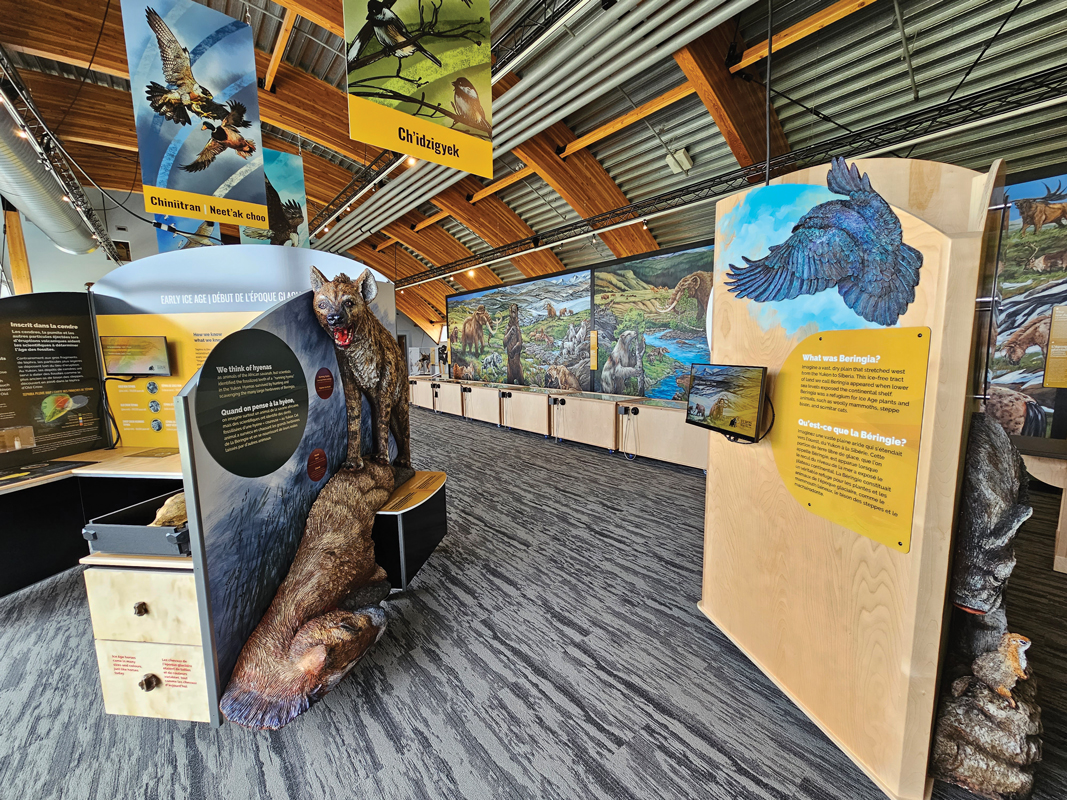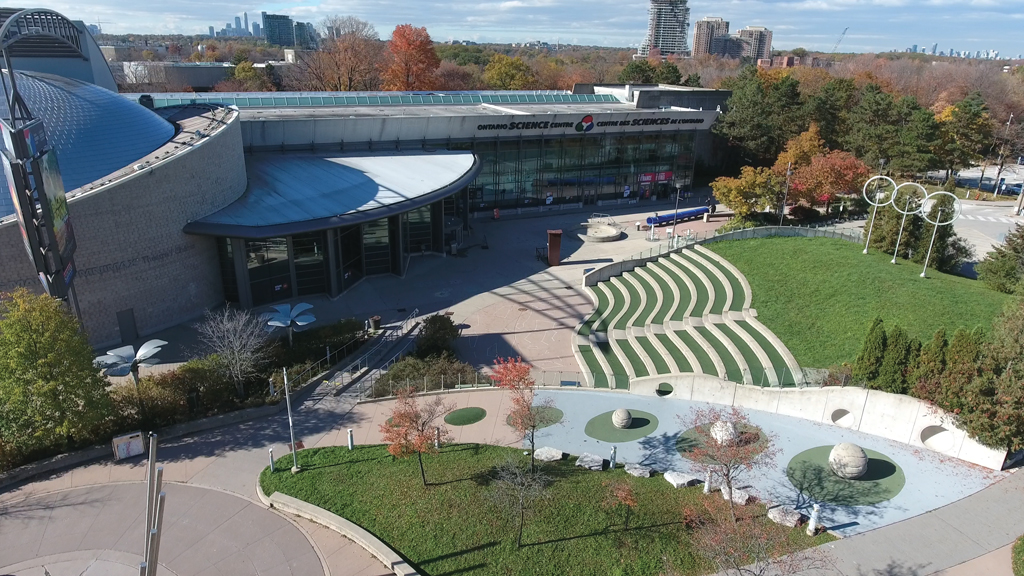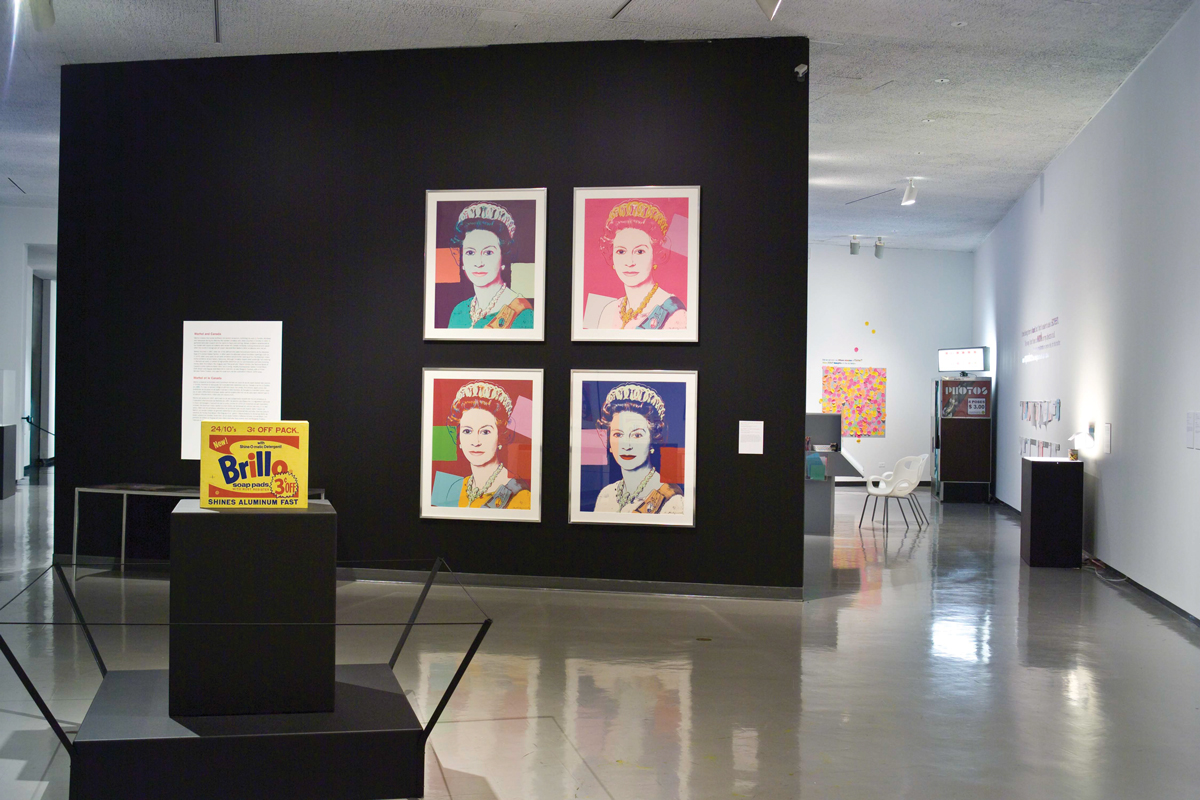In the Spotlight
Yukon’s Beringia Interpretive Centre reopens following significant renovations
Ontario government’s plans to relocate Ontario Science Centre stir controversy
UNDRIP Plan Released by Justice Canada
New Executive Director for Association of Nova Scotia Museums
Yukon’s Beringia Interpretive Centre reopens following significant renovations

Front view of the Yukon Beringia Interpretive Centre. Photo – Government of Yukon.
On June 17, the Beringia Interpretive Centre in Whitehorse opened for the first time in over six months, after undergoing major renovations. The centre closed at the end of 2022 in order to perform renewal work on exhibits in the Great Hall. The hall had seen minimal changes since the facility’s opening in 1997, and the closure allowed the centre to modernize exhibits, increase interactivity, and make the space more modular for greater flexibility in exhibitions. The new facilities include a feature wall showcasing Beringian animal skulls, a collection of over 50 Yukon fossils, a play area, three interactive stations covering different phases of the Ice age, and a renewed reception area, along with a 40-foot painted mural illustrating the region’s plants and animals through time. While the centre has undergone targeted exhibit renewals to bring content up to date over the past decade, the full closure was an opportunity to perform much more extensive work.
Ontario government’s plans to relocate Ontario Science Centre stir controversy

Aerial view of the Ontario Science Centre in Toronto. Photo — Ontario Science Centre.
In April, the Government of Ontario unveiled a plan to relocate the Ontario Science Centre from its landmark location in the Don Valley, where it has existed since 1969, to a new home atop an underground parking garage at Ontario Place. News of the iconic facility›s move was initially met with surprise and confusion by the public, followed by concerns that the new space would be considerably smaller —about half its present size —in its new waterfront home. The province›s request for proposals (RFP), posted to a limited-access website for government contracts, states that «A number of program elements were not included in the [analysis] due to a required reduction in the size of the building / square footage requiring rationalization of the current activities.» The province acknowledged that some of the spaces unaccounted for in the new plans are «core to the overall experience» and requested that bidders on the project consider including them somehow. Among these spaces is the TELUS Rainforest, a large-scale installation funded by TELUS; the government›s plans did “not currently contemplate the opportunity for a large immersive space that replicates the experience of the TELUS Rainforest.» The Science Centre proposed a 27-metre-tall planetarium which may not fit into the new space, even though the province claims that the planetarium would provide «invaluable tools for science communication,”. The Ford government argues that declining attendance over the past decade, combined with rising operating costs, justify the move.
Provincial and federal government offer $56-million funding boost for stalled Montreal Museum of Contemporary Art expansion

Front view of the Musée d’art contemporain (MAC) de Montréal. Photo – Supplied by the Musée d’art contemporain (MAC) de Montréal.
In February 2014, Montreal’s Musée d’art contemporain (MAC) announced an ambitious expansion plan with an anticipated cost of $44 million. In January 2019, the project launched and was quickly paused when potential cost overruns became apparent. The museum moved to a temporary space in Place Ville Marie in the summer of 2021 and a new call for proposals with an $85-million budget was issued in the spring of 2022— a call that was cancelled in June of 2022 owing to a meteoric rise in labour and material costs due to the COVID-19 pandemic. The new $56-million envelope brings the total projected government investment to $105 million, split roughly down the middle between provincial and federal investments, which brings the total budget to $116.5 million when funds from the museum’s Foundation are included. Recently, John Zeppetelli, the museum’s executive director and chief curator, stated that the new facility could hope to open in 2027, two years later than originally planned, though that optimism was not matched by much of Montreal’s arts community. Before the move to its temporary home, the museum’s Place Des Arts location had been seeing record attendance, and Zeppetelli underlined that the museum’s temporary home does not have the space or resources to present exhibitions on the scale of its original location.
Winnipeg Art Gallery-Qaumajuq auctions off Warhol works to build contemporary Indigenous art endowment fund

Warhol Larger than Life, October 5, 2007 January 6, 2008, Winnipeg Art Gallery. Photo – Ernest Mayer, courtesy of WAG-Qaumajuq Ernest.
The Winnipeg Art Gallery-Qaumajuq (WAG) announced in April that it had deaccessioned four Andy Warhol screenprints in order to build a new endowment fund, the aim of which is to diversify its permanent collection, beginning with contemporary Indigenous art. The colour prints, created in 1985 as part of Warhol’s Reigning Queens portfolio, depict Queen Elizabeth II, lending a symbolic aspect in addition to the practical benefit of their sale. At the time of the announcement, Indigenous art represented only one percent of the gallery’s collection; this includes the collection at Qaumajuq, the Inuit art centre the WAG opened in March 2021 both virtually and in person, that managed to draw 6,000 visitors in its first week despite a 25% capacity limit due to the COVID-19 pandemic. Like many galleries, the WAG receives government funding for operating costs but not for acquisitions. When the gavel fell on June 8, the Warhols sold for $936,000, surpassing expectations of a $700,000-$900,000 sale.
UNDRIP Plan Released by Justice Canada
On June 21, Indigenous Peoples Day, Justice Canada released the United Nations Declaration on the Rights of Indigenous Peoples (UNDRIP) Act Action Plan. The plan›s release followed an extensive consultation process with Indigenous peoples and details a list of priorities for federal agencies and departments. The department of Canadian Heritage has been assigned a number of shared priorities aimed at developing ‹a comprehensive approach to combat anti-Indigenous racism,› as well as providing funding to community-based initiatives in service of that approach. For our sector in particular, several departments have been tasked with developing and distributing educational materials, in collaboration with Indigenous educational organizations, museums and other organizations, to inform non-Indigenous Canadians on UNDRIP. The recommendations in Justice Canada›s Action Plan are in keeping with the CMA›s Moved to Action report and the CMA was very pleased to see priority being placed on Indigenous self-determination. We intend to connect with our partners at Heritage and work towards determining how museums can best support these goals.
New Executive Director for Association of Nova Scotia Museums

Devin Casario, Executive Director of the Association of Nova Scotia Museums. Photo – Supplied by Association of Nova Scotia Museums
The Association of Nova Scotia Museums (ANSM) has announced its new executive director. Devin Casario comes to ANSM with a strong background in arts and culture, most recently as Economic Development and Funding Manager for the Town of Lunenburg. His work as a consultant and cultural advisor also includes a co-founder role at the Culture Link Community Interest Company, which was instrumental in the creation of the Light House Arts Centre, a multi-level, expansive multidisciplinary facility in the heart of downtown Halifax which includes co-working and dedicated office spaces for cultural nonprofits and creative startups. Casario is slated to begin September 11, spending his first two and a half weeks alongside Maggie MacIntyre, who has helmed the association for the past two years. Please join us in congratulating both Devin and the ANSM!
